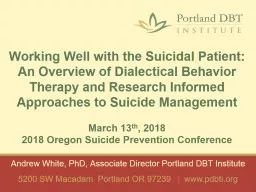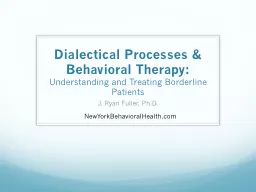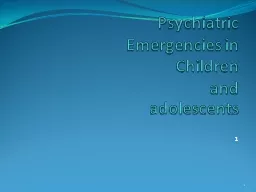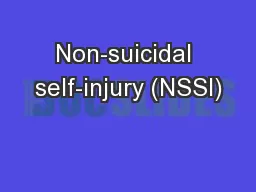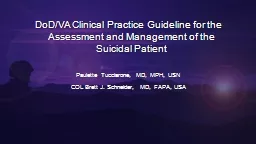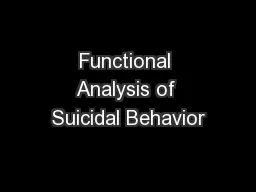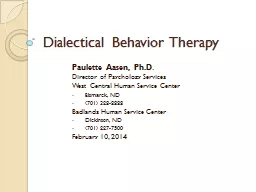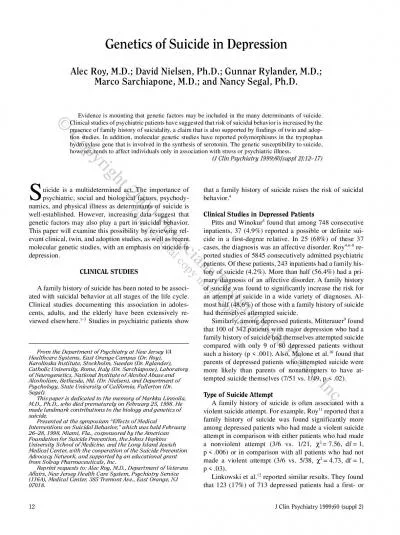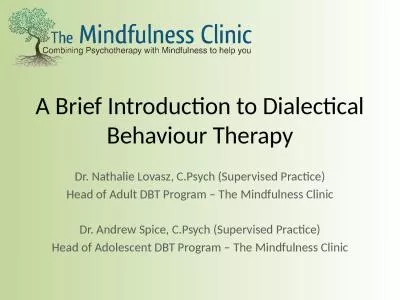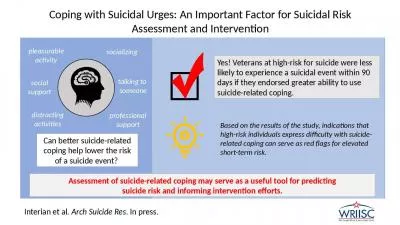PPT-Working Well with the Suicidal Patient: An Overview of Dialectical Behavior Therapy and
Author : marina-yarberry | Published Date : 2018-10-31
March 13 th 2018 2018 Oregon Suicide Prevention Conference 5200 SW Macadam Portland OR 97239 wwwpdbtiorg Andrew White PhD Associate Director Portland DBT Institute
Presentation Embed Code
Download Presentation
Download Presentation The PPT/PDF document "Working Well with the Suicidal Patient: ..." is the property of its rightful owner. Permission is granted to download and print the materials on this website for personal, non-commercial use only, and to display it on your personal computer provided you do not modify the materials and that you retain all copyright notices contained in the materials. By downloading content from our website, you accept the terms of this agreement.
Working Well with the Suicidal Patient: An Overview of Dialectical Behavior Therapy and: Transcript
Download Rules Of Document
"Working Well with the Suicidal Patient: An Overview of Dialectical Behavior Therapy and"The content belongs to its owner. You may download and print it for personal use, without modification, and keep all copyright notices. By downloading, you agree to these terms.
Related Documents

